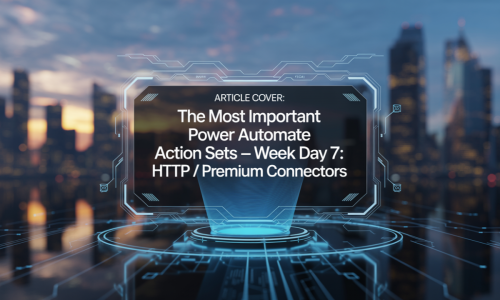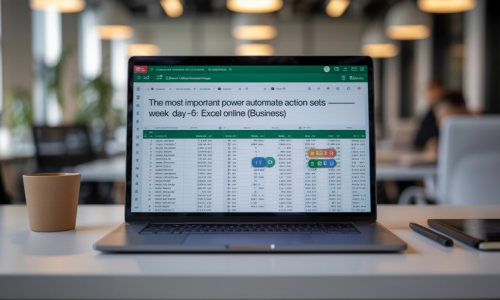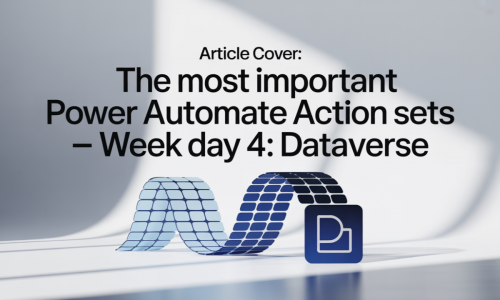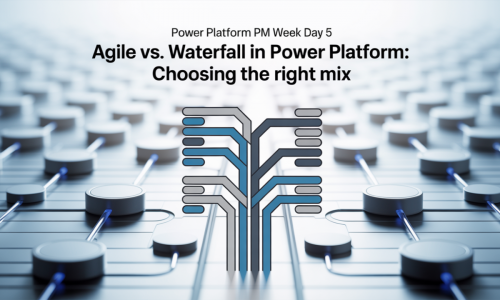Power Platform Bad Decision Week Day 4 – Who Needs Solutioning? Just Build Direct in Production!
-
Admin Content
-
Oct 03, 2025
-
251
In the land of questionable Power Platform practices, few are as bold—or as reckless—as skipping solutions altogether. After all, why waste time thinking about “Application Lifecycle Management” or “environments” when you can just dive straight into production, drag-and-drop your way to glory, and hope for the best?
Let’s unpack this classic misstep.
The Temptation of Direct Production
It starts innocently. A request comes in from a manager: “Can you quickly build a small app for tracking team tasks?” You don’t want to waste hours creating solutions or worrying about Dev/Test/Prod. You just crack open the default production environment, start a new Canvas App, connect directly to live SharePoint lists, and voilà—you’re a hero by lunchtime.
The adrenaline rush of skipping governance is addictive. No barriers, no “solution layers,” no worries about moving things around later. It feels like productivity at its finest.
The Hidden Consequences
The problems come later—always later. Here’s what happens when “solutioning” is treated as optional:
- No Portability That app you built in production? Good luck moving it anywhere else. Without a solution, dependencies are scattered across environments, and your export/import options are limited or messy.
- Version Control Nightmare Did you want to test a new feature before deploying it to your business users? Too bad. Your “test” is live. Your debugging is live. And your rollback plan? Also live.
- Dependency Chaos Flows connected directly to live data sources don’t travel well. Dataverse custom tables, security roles, or API connections—if you’ve bypassed solutions, they’re all glued tightly to your one production build.
- Collaboration Breakdown Want a colleague to help maintain or extend your work? Hope they enjoy hunting for unmanaged artifacts in production, because nothing is neatly packaged or documented.
Real-World Drama in “Build Direct” Land
Imagine this: You proudly demo your new production app. Everyone applauds. The next day, you get a request to roll it out globally to three new departments. Suddenly, you need dev/test environments, structured deployment, and a plan for ongoing change. But your build isn’t portable, your flows are tied to a personal connection, and your app is wired directly to live data.
Cue weeks of rebuilds, re-connections, and awkward explanations. You didn’t just skip a step—you created technical debt dressed as a quick win.
Why Solutioning Exists
Solutions in Power Platform aren’t bureaucracy for bureaucracy’s sake. They exist because:
- They package your work so it can move between environments.
- They provide versioning and layering, so you can manage updates cleanly.
- They keep dependencies explicit, reducing surprises later.
- They enable ALM practices that scale beyond a single app.
Think of solutioning like putting your LEGO build on a baseplate. Sure, you can stack bricks on the floor, but don’t complain when your masterpiece falls apart the moment someone bumps into it.
The Smart Alternative
Instead of hacking away directly in production:
- Start in a Dev Environment – Treat it as your sandbox.
- Build Inside a Solution – Even if it’s just a small app or flow, package it properly.
- Use Test Environments – Validate changes with dummy data before unleashing them on production.
- Deploy via Solutions – Move managed solutions into production for stability.
Closing Thought
Skipping solutioning might feel like a time saver, but it’s a trap. What starts as a five-minute shortcut can end up costing weeks of rework. Solutions are the backbone of responsible Power Platform development, and ignoring them is the fast lane to chaos.
So next time someone says, “Just build it quickly in production, we’ll fix it later,” remember: later always comes—and it usually hurts.





